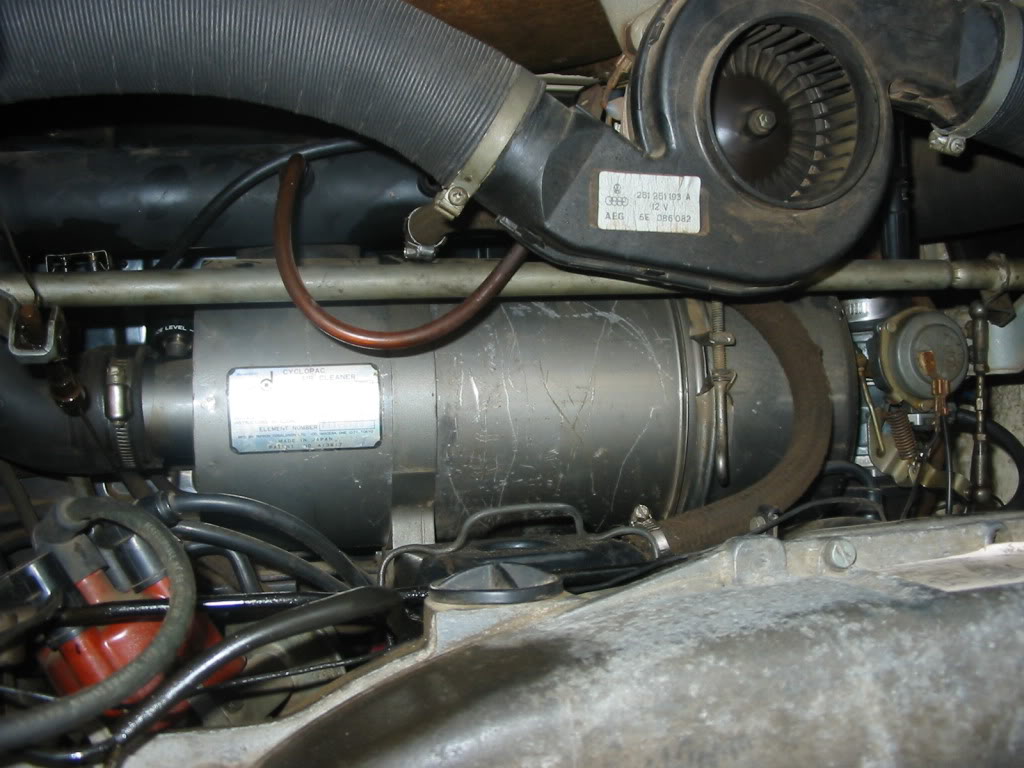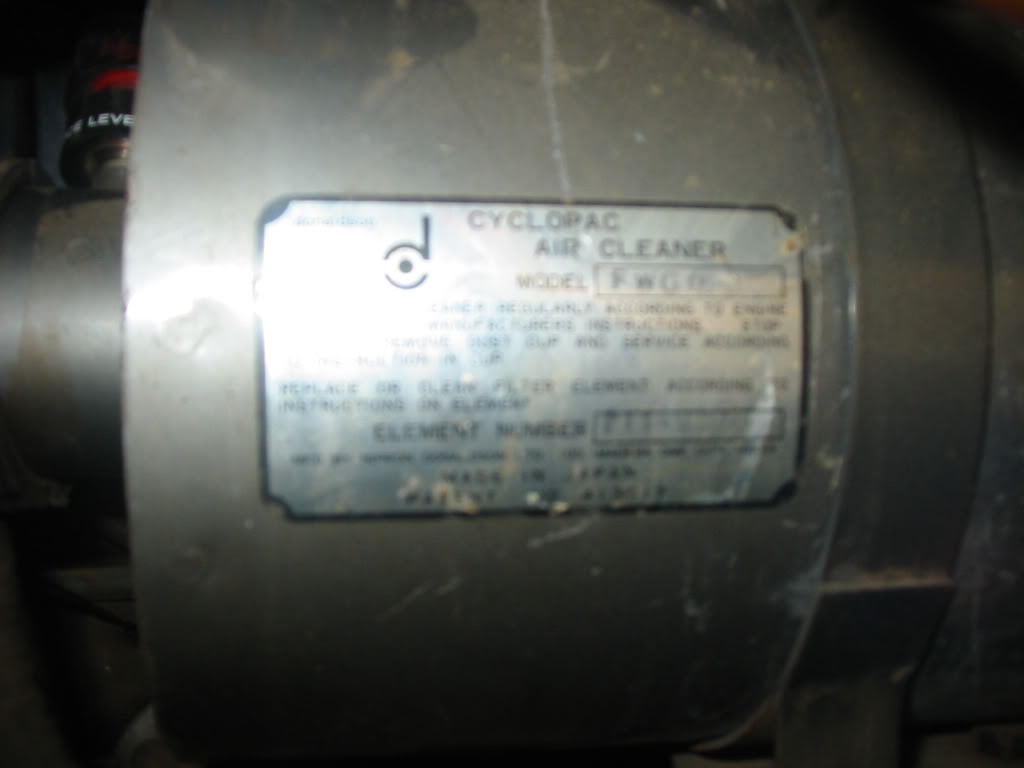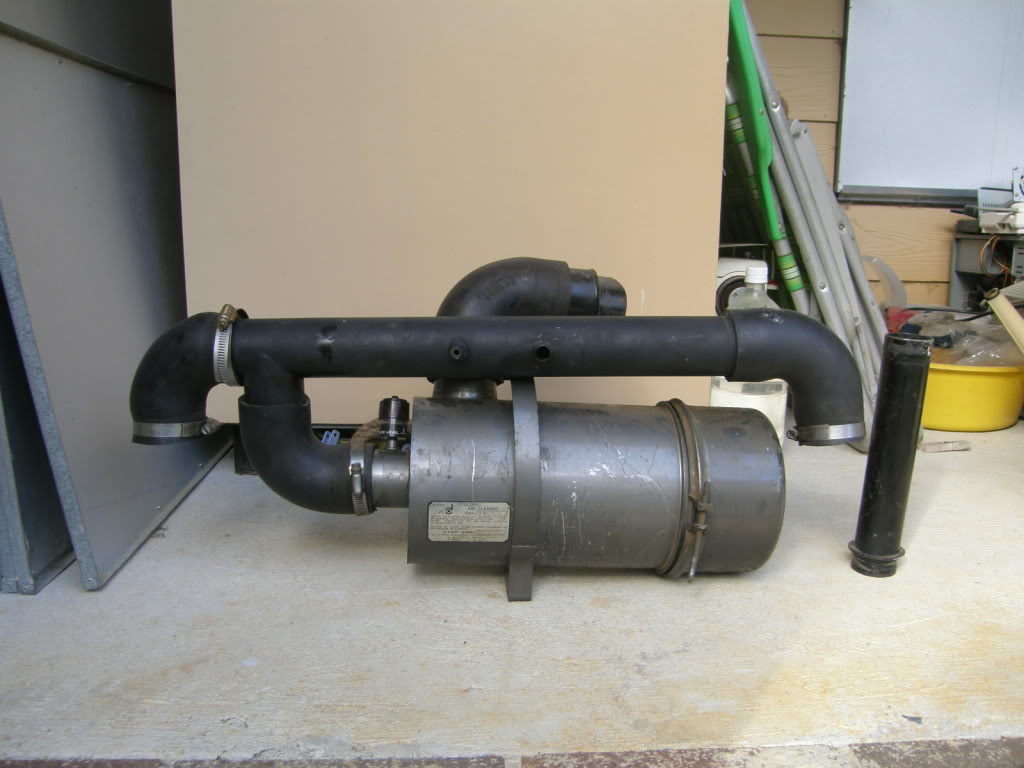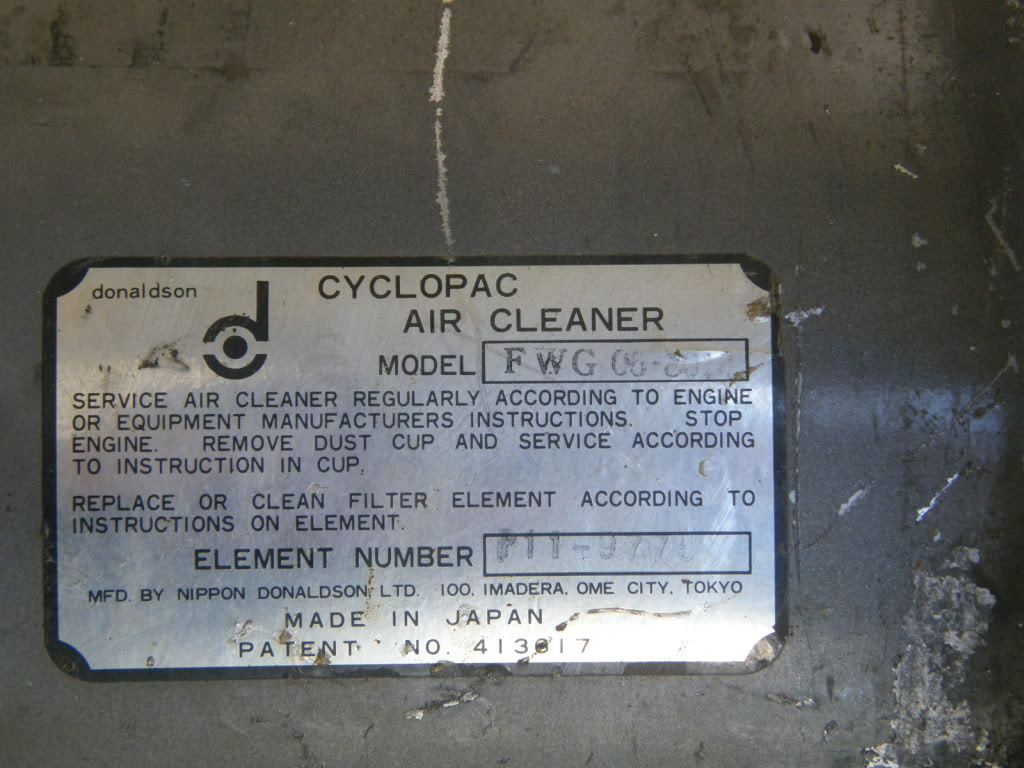Bugger wrote:
I got a few of the Type 2 std airfilters that uses oil and their connecting hoses
That tall housing filters is what I have they work very well

Bugger wrote:
I got a few of the Type 2 std airfilters that uses oil and their connecting hoses
Dawie wrote:Air filter (in the 65 Kombi we had when i was a child) was similar to the one in above photo. Was just a massive oil bath unit, plenty wires inside, don't think it was cyclone. (Opened it to see what's inside while still in primary school).Think it was made by MANN. Don't know if that size was standard or optional and which years had them. Fig will know.
One publication (i.e. Vincent Molenaar & Alexander Prinz, "VW Transporter & Microbus - Specification Guide 1967~79", The Crowood Press, 2005, ISBN 1-86126-765-7, Chapter 7: Optional Equipment, Pages 51 & 56), cites the following M-Codes, for 1968~79 VW Type 2s.Bugger wrote:That tall housing filters is what I have they work very wellBugger wrote:
I got a few of the Type 2 std air filters that uses oil and their connecting hoses


Comparative filtration efficacy and airflow tests for different types of automotive air filter elementsfig wrote:The large oil-bath air filters fitted as standard on all SA buses from 64-69 or so were the same as M156 (SA buses did not have M-codes).
I don't know anything about relative efficiency of different filters, but I swear by oil bath filters for African conditions.
If my own German built, British specification, 1973 VW 1600 Type 2 Kombi based, Westfalia Continental campervan, is any indication, it would seem that British specification VW Type 2s, didn't have M-Code plates either!?!fig wrote:When crossing the Nubian desert in Sudan in the ZebraBus, the oil bath became an almost solid cake of oily mud, with just the thinnest layer of oil on top. Despite that, I couldn't see or feel any grit in the pipe between filter and carb, or in the carb. After that incident, I made a point of cleaning the filter more often.
That is why, when regularly operating a vehicle under dusty conditions, it is recommended that one use a two-stage air cleaner, so that the majority of dust is first removed utilising inertial effects, before the air flow reaches the normal paper-element filter or oil-bath air cleaner, as discussed in my article and the following references!eben wrote:...but..... a paper air filter would be clogged and choking your engine loooooong before an oil bath filter would in dusty conditions.
In fact: the "filtering efficiency" of the paper element would get so high it would hardly let any air in




I have just learned from Ralph van den Houten, that he and his brother Lucas, are embarking on a 20,000 km trek next year, in their 1978 VW 2000 Type 2 ASI Riviera campervan, from Amsterdam in The Netherlands, to Capetown in South Africa, so there is even greater impetus, to thoroughly investigate air-filtration & oil-filtration options.Nigel A. Skeet wrote:More recently, two Dutch brothers from The Netherlands, drove a North American specification, 1979 VW 2000 Type 2 ASI Riviera campervan, from Amsterdam, in The Netherlands, to Beijing, in China, for the 2008 Olympic Games; encountering very dusty conditions en route.





The following chart, which formed a part of the Canadian Fish carburettor brochure, compares the degrees of engine wear, associated with a micronic air filter and an oil-bath air cleaner.fig wrote:I don't know anything about relative efficiency of different filters, but I swear by oil bath filters for African conditions.
When crossing the Nubian desert in Sudan in the ZebraBus, the oil bath became an almost solid cake of oily mud, with just the thinnest layer of oil on top. Despite that, I couldn't see or feel any grit in the pipe between filter and carb, or in the carb. After that incident, I made a point of cleaning the filter more often.

That would certainly be an interesting addition to the information database; particularly if there are a comprehensive set of pictures and sectional diagrams included.fig wrote:Nigel
I was just going through my factory VW literature and I found a Technical Bulletin K7 of 1963 "Oil bath air cleaner with cyclone filter for Volkswagen 1200, Transporter 1200 and Industrial Engine 122-1/2", which describes the service fitment of a larger oil bath air cleaner with cyclone primary filter.
It's 18 pages, but I'll see if I can have it scanned.

Yes, Nigel, lots of pics and detailed plans. And yes, I'm sure there were later editions of this bulletin; I just don't have them. The pictures of the larger oil bath filters on the 1200 engines look exactly the same as the larger oil bath filters on 1500 and 1600 engines.Nigel A. Skeet wrote:That would certainly be an interesting addition to the information database; particularly if there are a comprehensive set of pictures and sectional diagrams included.fig wrote:Nigel
I was just going through my factory VW literature and I found a Technical Bulletin K7 of 1963 "Oil bath air cleaner with cyclone filter for Volkswagen 1200, Transporter 1200 and Industrial Engine 122-1/2", which describes the service fitment of a larger oil bath air cleaner with cyclone primary filter.
It's 18 pages, but I'll see if I can have it scanned.
One wonders whether there might have been a series of similar bulletins for the later vehicles!?!

As great as David Eccles's books are, I would take everything in them with a pinch of salt.Nigel A. Skeet wrote:David Eccles, "VW Transporter & Microbus - Specification Guide 1950~67", The Crowood Press, 2002, ISBN 1-86126-509-3 [ Chapter 9 - Transporters Assembled or Built Overseas - South African Transporters, Pages 61~63].
Extract from Page 61
« A cyclone air filter is usually standard, but some Double Cabs have a very unusual arrangement with a pair of ducts mounted to the rear sides of the drop gates. These take in air from the top of the drop gates and duct it into the engine through slots above the engine bay. Earlier versions of Double Cabs with this extra cooling-air arrangement are found with the standard cooling vents still in place, whilst later ones are similar to the Australian version with smooth corners. »
Extract from Page 62, referring to a British registered, South African specification, 1966 VW Kombi, illustrated on Page 61.
« Other interesting features, which are optional equipment, include the cyclone air filter (usually a standard option in hot, dusty climes) and extra air ventilation fans in the roof of the load area. An unusual after-market addition is the extra cooling vents, each with a chrome cover. They can be flapped open to allow more cooling air to be forced into the engine bay. »
Were you referring to these extra cooling vents or some other?fig wrote:As great as David Eccles's books are, I would take everything in them with a pinch of salt.Nigel A. Skeet wrote:David Eccles, "VW Transporter & Microbus - Specification Guide 1950~67", The Crowood Press, 2002, ISBN 1-86126-509-3 [ Chapter 9 - Transporters Assembled or Built Overseas - South African Transporters, Pages 61~63].
Extract from Page 61
« A cyclone air filter is usually standard, but some Double Cabs have a very unusual arrangement with a pair of ducts mounted to the rear sides of the drop gates. These take in air from the top of the drop gates and duct it into the engine through slots above the engine bay. Earlier versions of Double Cabs with this extra cooling-air arrangement are found with the standard cooling vents still in place, whilst later ones are similar to the Australian version with smooth corners. »
Extract from Page 62, referring to a British registered, South African specification, 1966 VW Kombi, illustrated on Page 61.
« Other interesting features, which are optional equipment, include the cyclone air filter (usually a standard option in hot, dusty climes) and extra air ventilation fans in the roof of the load area. An unusual after-market addition is the extra cooling vents, each with a chrome cover. They can be flapped open to allow more cooling air to be forced into the engine bay. »
He states above that "cyclone filters were usually standard". In fact, M156, larger oil bath air filter, was standrad on SA buses; I've never seen a VW cyclone filter fitted to any SA bus.
And the extra cooling flaps referred to were certainly not a VW option. From the pics in the book they look like generic aftermarket vents that you would find on a truck panelvan body; likewise the "extra air ventilation fans in the roof of the load area".